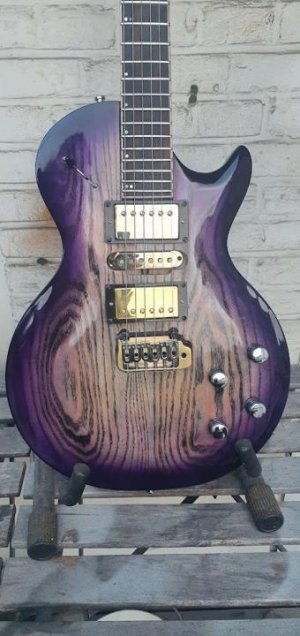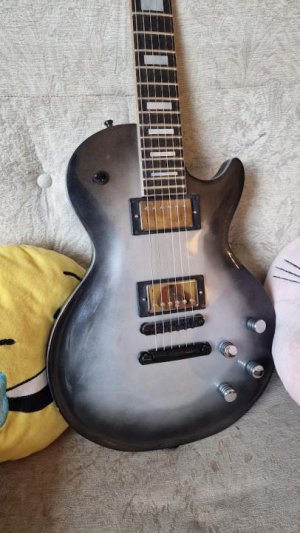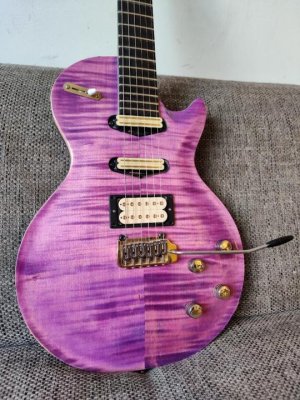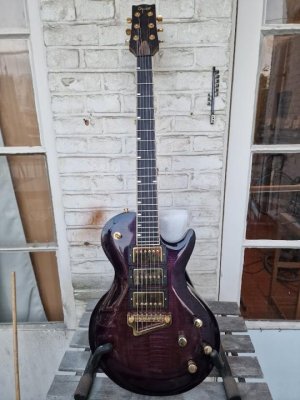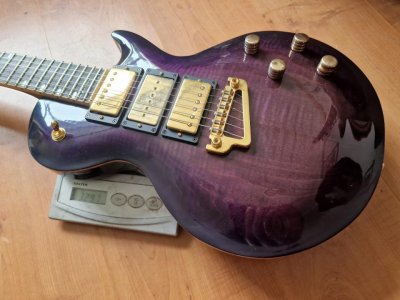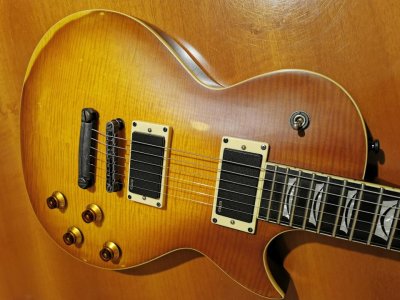I wrote you extensively about the bodywoods

The tightness of grain and density surely make a difference but in different ways than you might think at first. A superstiff, extremely lightweight bodyback (spanish cedar, spruce) will give you a very 'snappy' response, but very stiff and heavier wood, like ash, will also give you a snappy response: the EQ between both will just be different. The former will have a more 'airy' tone, less compressed, where the hard ash will have a much tighter, more aggression.
Thickness: I wrote about that before as well. It matters, in so far that it is a parameter you can think about in terms of chance. If you want to have a great LP, what is that recipe? What makes an LP an LP? And thickness is surely a defining feature in that recipe. Will a thinner guitar sound bad? No, of course not. The Blackmachine guitars are just 35, sometimes even just 30 millimeters thick and they sound HUGE. But, not like an LP. As I said before as well, it's not just thickness that matters, it's the mix of a softer lighter weighing bodyback and a top hard as a rock maple, plus the neck which steers the tone a certain direction. The material of the body seems to matter less and less the thinner you go: that HSS LP I posted earlier sounds amazing and huge (I might make a video about it this weekend), and that HSH LP also sounds great, but because of wood choices, scale, pickups, trem, they feel and sound very alike. ONe is maple+ash, the other just ash. Perhaps that's why manufacturers are less discriminating when it comes to their bodybacks for their thinner LP style guitars?
The thickness of the neck makes a huge difference too: a thinner body but a neck as chunky as Spanish Chorizo will give you a meatier tone (lol) versus a pencil thin neck. I have seen guitars have their tone change completely, when I shaved a neck thinner for a customer. Did it sound worse? No. But it did sound different.
Finish material makes zero difference. Finish thickness makes more of a difference. That is imho not even open for debate. I have made a guitar once and completed it without finish. Tested it. Then added the finish, and tested it again: the guitar indeed lost some of its open character, all other things condidered equal. It's marginal, but ALL OF THIS is marginal! But add all those margins up and boom, you get either a horrible, or a great guitar.
It's not just a matter of one spec or another: it's a matter of having, finding, a recipe, that will give you a somewhat predictable result. And can something predictable be made on a budget? I doubt it. On a budget, the guitar has to play well, stay in tune, and fit physical parameters, instead of tonal parameters.
As far as your assesment about the bridge pickup: I agree. Most LP's have their bridge pickup fairly close to the bridge because that how Gibson made it, but that can yield a shrill, bright, brittle tone (which Gibson often tries to mediate by using a 300k pot). Shift the bridge pickup up to 12mm towards the neck and you get a way fatter tone, without making it mushy or flubby per se.

